| |
| |
| Non-Biblical Images |
The non-biblical roof bosses are very varied, ranging from saints and
martyrs, legends of doubtful provenance, images considered pagan, and
some of everyday (and as you will see, sometimes rather coarse) humour.
|
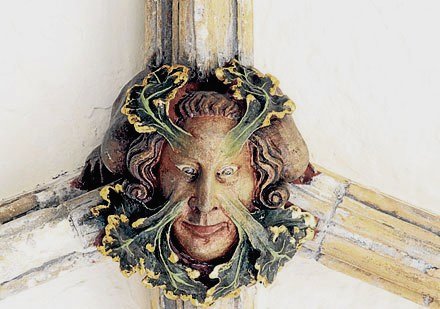 |
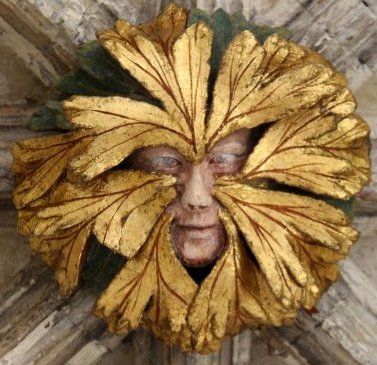 |
Green Man images. There is
much debate about the origin and meaning of the Green Man, a very
familiar image in churches and other buildings across Europe. The
general view is that they are of pre-Christian orgin, and represent
fertility.
|
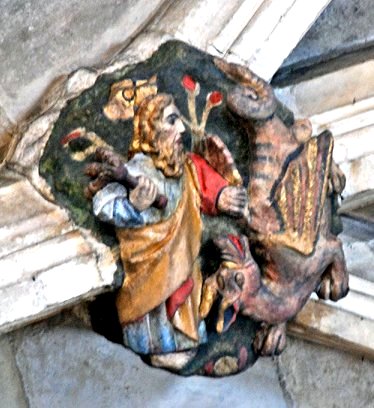 |
 |
Two images of dragon
slayers.
|
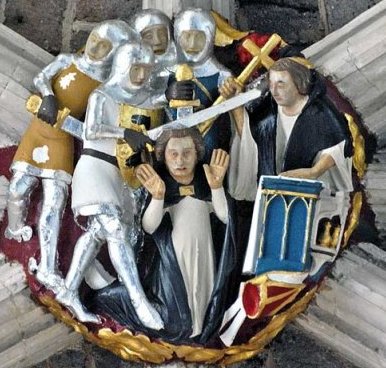 |
 |
|
Above left: the Martyrdom of Thomas of Canterbury. Above right:
a legend I have never seen anywhere else: an anti-Semitic and
unconvincing legend known as the Christian of Constantinople. The
Christian borrows money from a Jewish money-lender and gives a statue of
the Virgin Mary as a pledge. When the repayment is due, the borrower
lowers a casket containing the money into the sea. It is washed up on
the shore, where to money lender retrieves it. However, he denies that
he has the money. The statue comes to his rescue, announcing that he
has. The money-lender receives his due punishment.
|
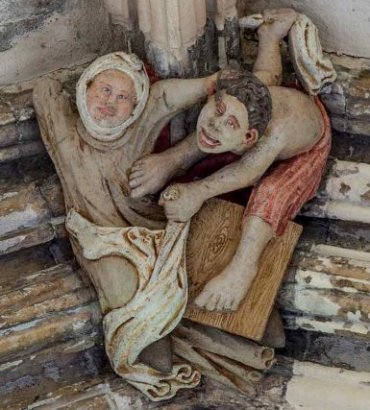 |
 |
Two
secular images from the cloister. Above left we see the Laundry
thief. A young villain is attempting to steal the woman's laundry. The
woman seems to be getting the better of him! The above right image
is somewhat controversial. It is one of two roof bosses said to show a
defecating peasant. Why ever would this be acceptable in such a
location? Medieval humour could be earthy at times. One thought, though,
occurs. In Catalonia, in Spain, the image of the defecating farmer is
quite common, and to this day is often included in Nativity scenes. It
is said to be a symbol of fertility, and so, perhaps, matches the Green
men images.
|
|
Back to page 1
|







